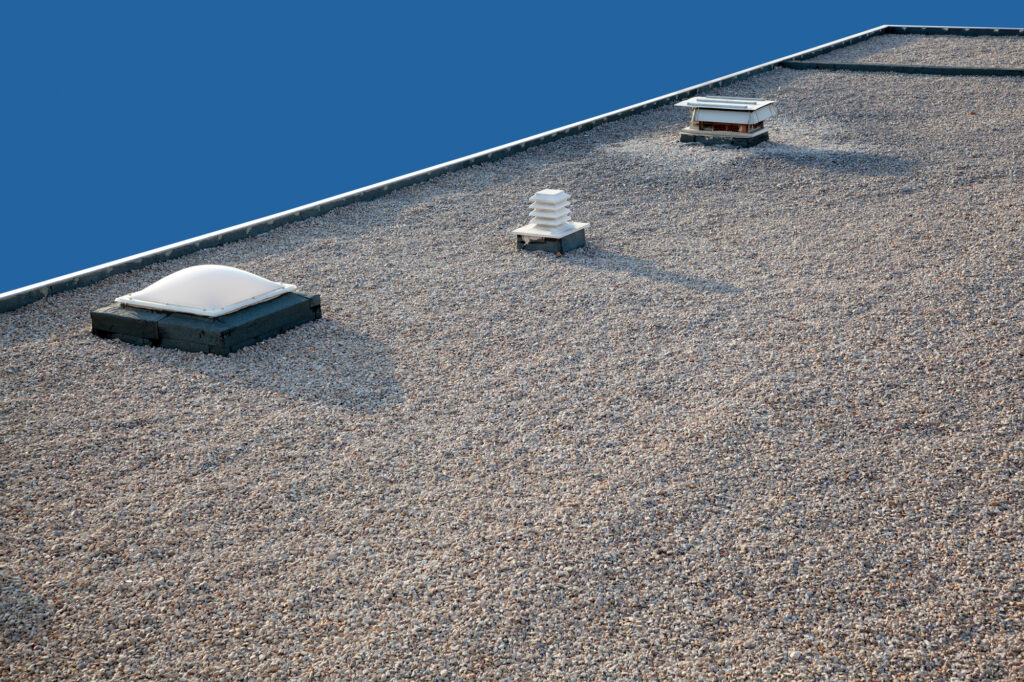Skylight installations are exciting opportunities for residential and commercial property owners. However, they are not a DIY roofing project and in particular, there are multiple types of skylights that may be best for your specific roof. Especially if a property has a low-sloped or flat roof, an even greater level of expertise is necessary for optimal skylight integration. For the safety of workers, those in the building, and the building itself, select professional skylight contractors to handle this task. Their experience and their knowledge make them the best suited to carefully manage and navigate the specific needs of flat roof skylight installations. Learn more below about the unique considerations of adding flat roof skylights and why it’s the kind of home improvement project to leave to the professionals!
What Do I Need to Know about Water and Flat Roof Skylights?
Creating a skylight means that there is a new opening between the exterior and interior of the home. Since the goal of the roof system is to protect the interior of a building and its inhabitants from the elements, a skylight needs to be able to serve some of the same functions as the roofing material that it is replacing. Here are some of the particular water considerations that are specific to flat roof skylights:
- To avoid standing water accumulating around the skylight, installing a skylight onto a flat roof requires the use of curbs or special mounting designs. These features help ensure that the skylight is elevated enough to avoid water pooling.
- Proper waterproofing with weather-resistant seals and built-in flashing is crucial for watertight skylight installation. The greater potential for water to pool on flat roofs means that roof leaks may be more likely to occur without skillful implementation of these protective features.
- Given the potential for more water interactions, ventilation and insulation are also essential to help prevent condensation and related concerns, like mold, from growing on the interior side of the skylight.
What Needs to Be Addressed Structurally for a Flat Roof Skylight?
In terms of roof and building structure, considerations range from ensuring the safety of roofing professionals during the skylight installation to evaluating if the roof and/or building structure can support the desired flat roof skylight. Anticipate that the professional roofing company will address the following needs in addition to other factors unique to your individual home or requests.
- In addition to skylight elevation, slope assessment supports effective drainage and leak prevention while maximizing the availability of natural light.
- The roofing type, specifically the material of the roofing system, impacts the skylight installation process. Each material has different properties and characteristics which influence everything from sealing compatibility to the techniques used to maintain the integrity of the roof during a skylight installation.
- The condition of the roof needs to be evaluated in order to determine if it has the capacity to support the weight of the skylight and any additional snow or debris that may accumulate. There may also be recommendations regarding maintenance needs such as more routine roof surface cleaning or roof repairs or replacements.
- To ensure that the building structure can support a skylight addition, roofing work or interior improvements may need to happen prior to or in tandem with skylight installation. However, one benefit to having a skylight installed as part of a new roof replacement is that you may be able to save money on labor by having service completed simultaneously.
Are There Unique Design Features to Consider with Flat Roof Skylights?
Your roofing system may vary from one home to the next. A skylight that you may have had installed in a previous location or in a different area on your property may not work in an area with a flat roof. Here are some of the changes that you may experience with flat roof skylights:
- Flat roof skylights are often square or rectangular in shape and have a lower profile than other skylights. This design makes them easier to integrate with flatter surfaces.
- These skylights also require the use of different glazing materials relative to associated durability and water prevention.
- The glaze and insulation types are also specific to the thermal characteristics of the flat roof. This calibration is necessary for energy efficiency and heat monitoring.
- Their shape options may be more limited to ensure their suitability for flat roof installation.
For any roofing work but especially with flat roof skylights, make sure to choose an expert roofer, like our team at Ranch Roofing, who has experience with the specific circumstances of your roof and skylight options. Checking out the available customer testimonials is a good way to find the right company for your roof and skylight preferences. Contact us here to ask questions about skylight installation, to inquire about roofing services, or to request a free estimate for upcoming projects in the greater Boston area.
